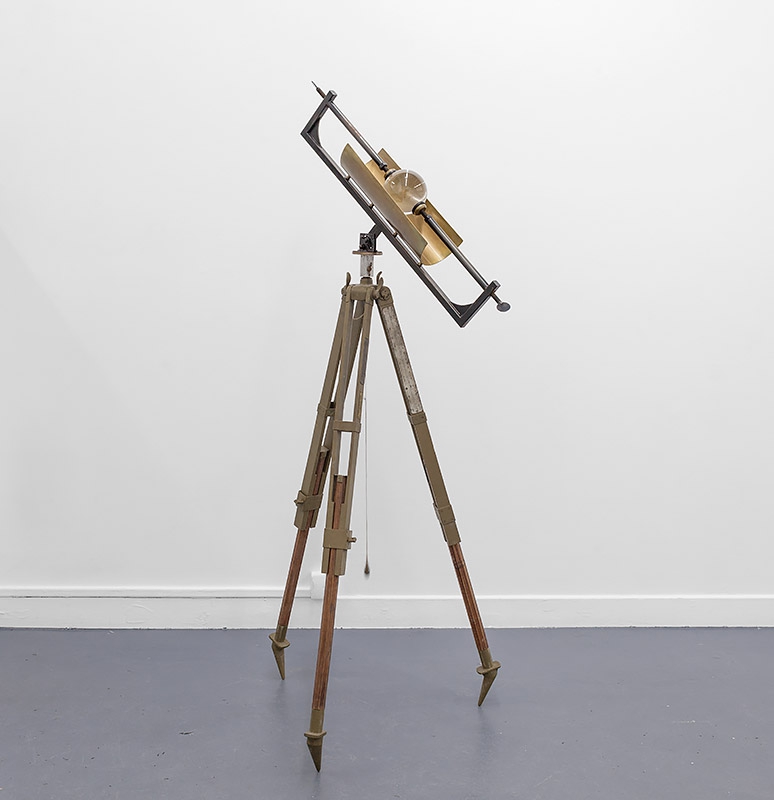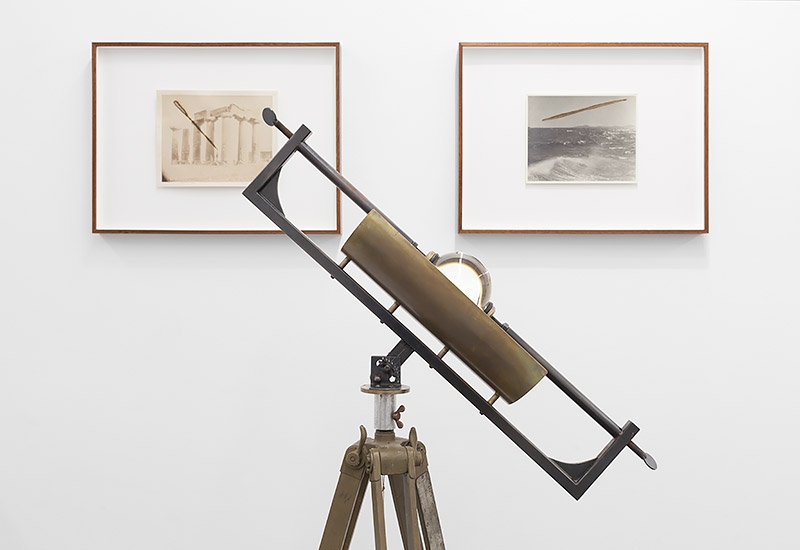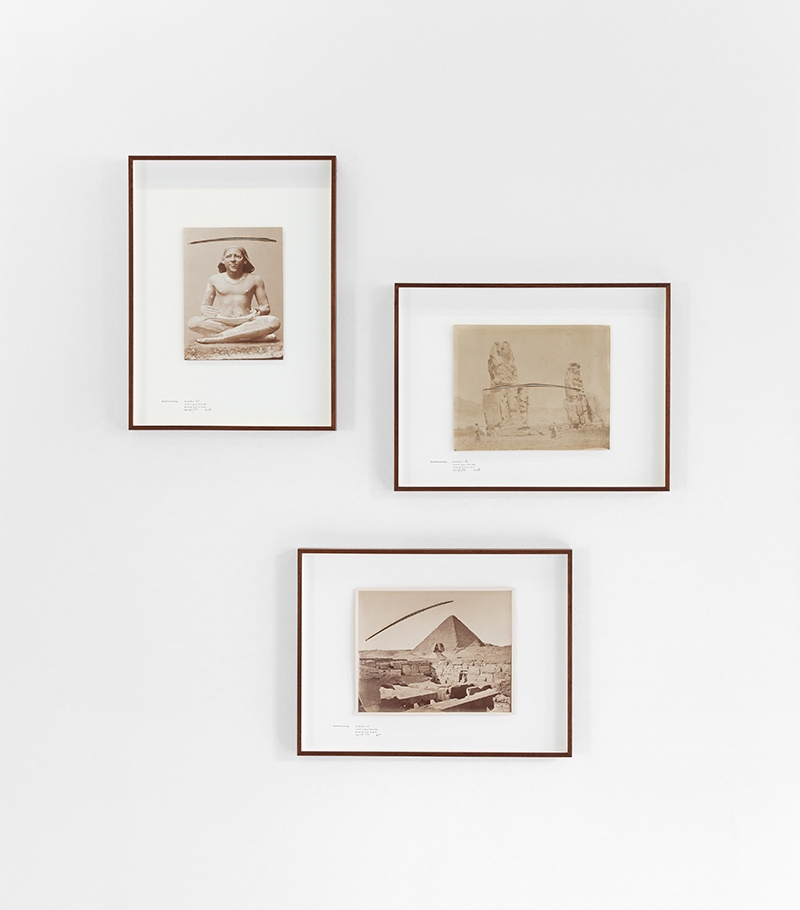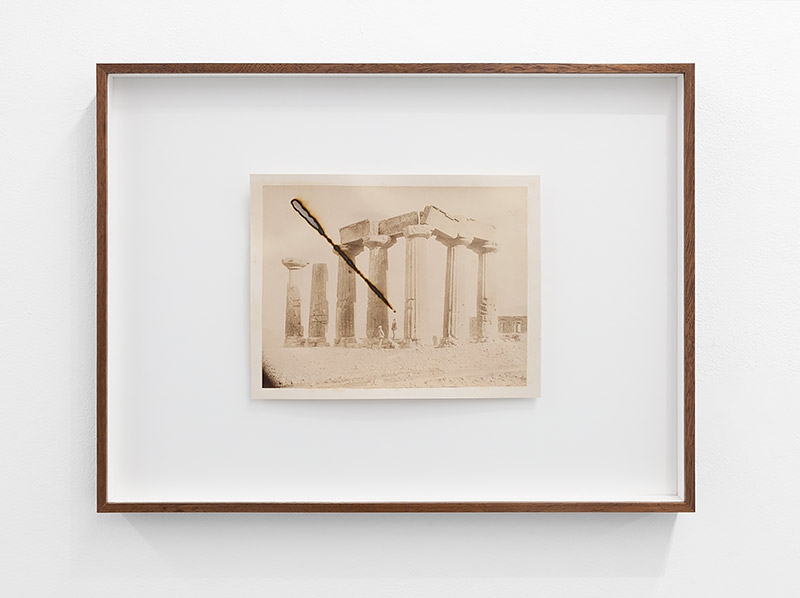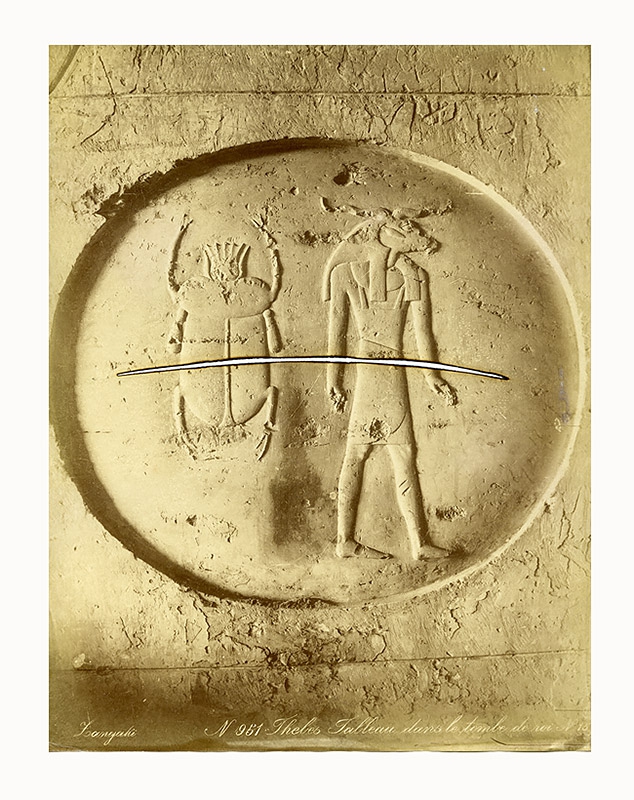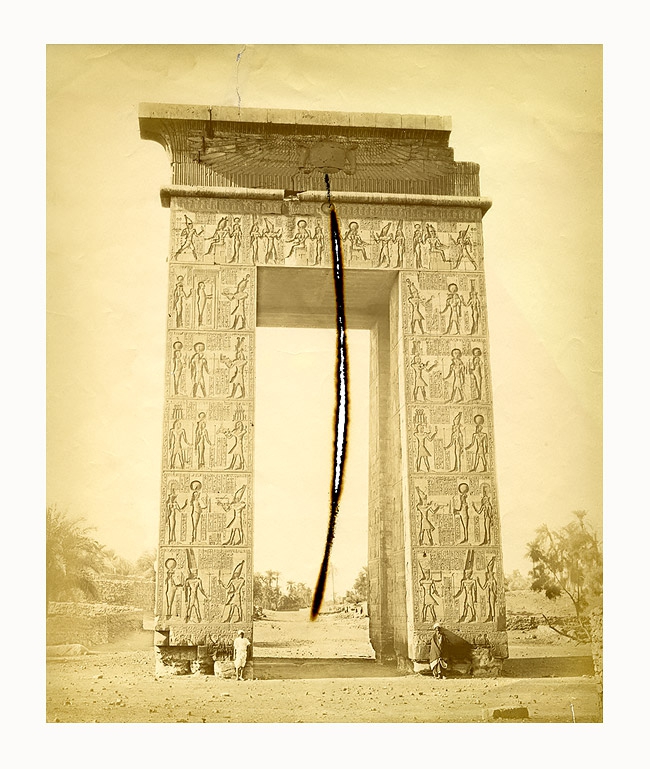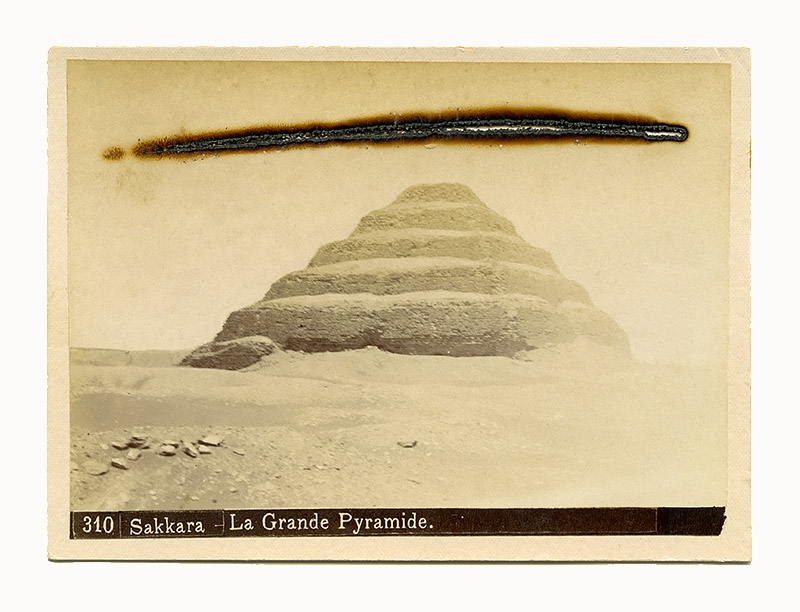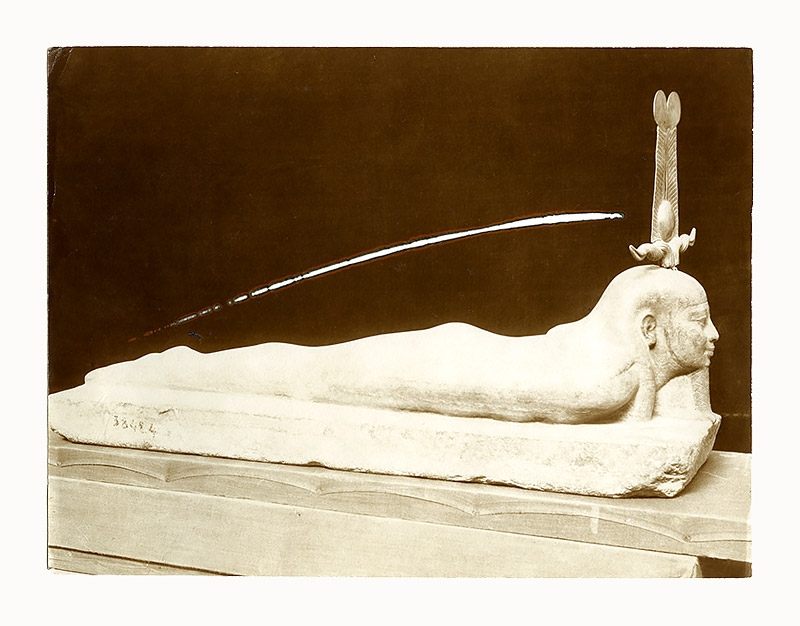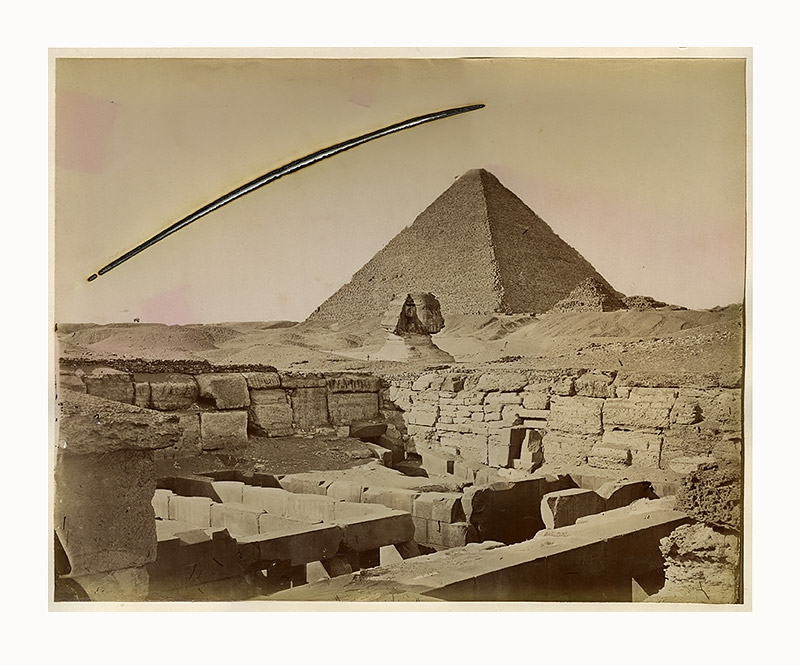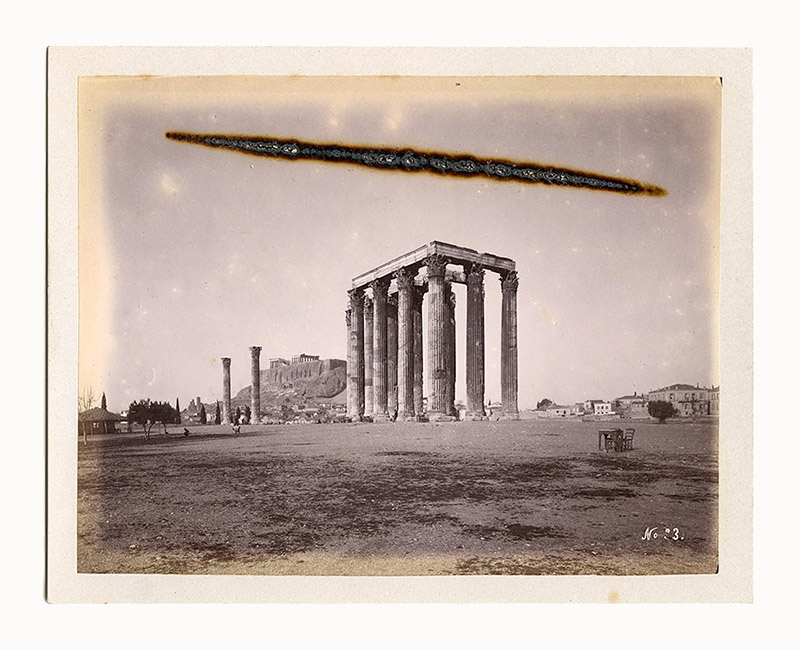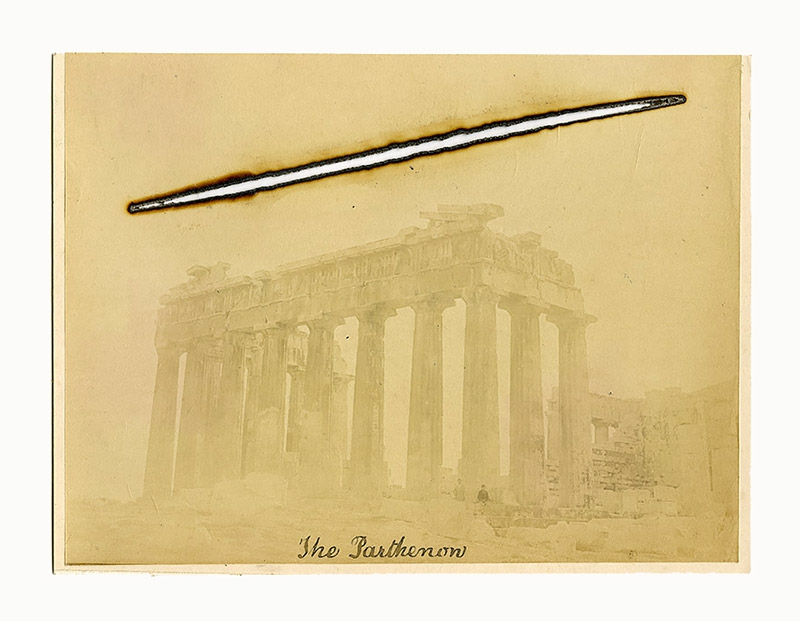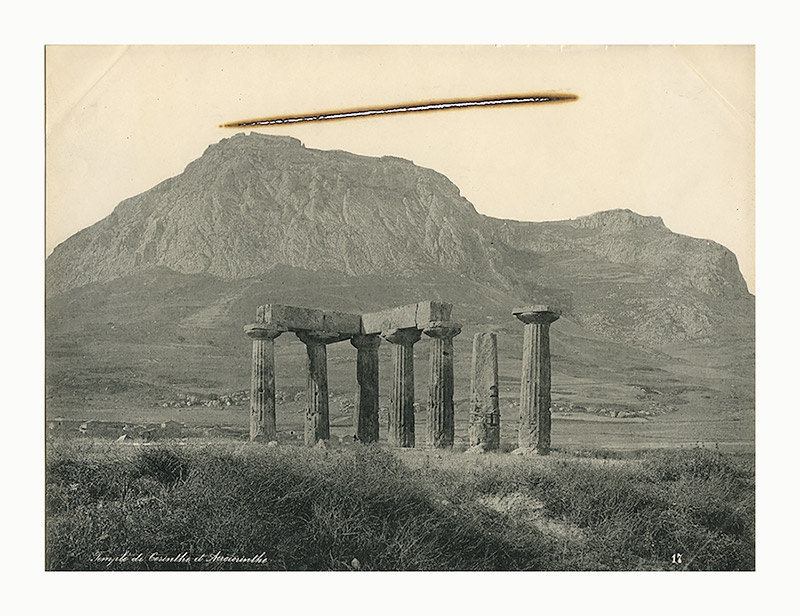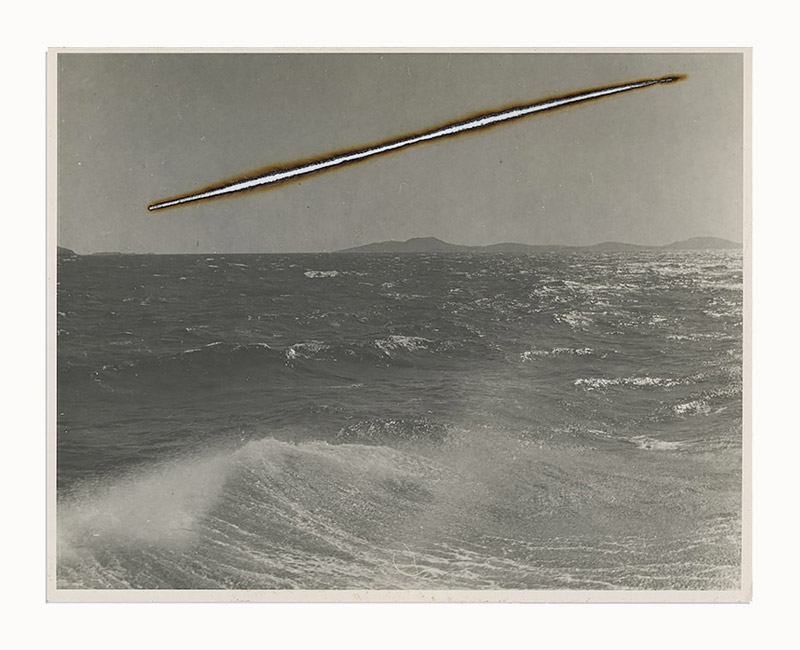
The never ending happening
Of what’s to be and what has been
Just to be a part of it
Is astonishing to me
Bill Fay, The never ending happening
-
So you run and you run to catch up with the sun but it's sinking
Racing around to come up behind you again.
The sun is the same in a relative way but you're older
Roger Waters, Time
-

Historical photographs (c. 1880) of ancient buildings and of nature are marked with a scorched trace. In each case, this ‘scar’ was created with a heliograph, a meteorological instrument that registers solar intensity through ‘burning’ a piece of paper. A model of it was built especially for this project.

The process was carried out at the exact site where the photographs were taken, in order to record the "same sun" once again. The project hence required trips to Greece and Egypt. The final stage will include as well Italy (Rome, Pompei).

Is it not, after all, the same sun that shines upon us today that lit the men who built ancient temples and who took early photographs in the 19th century? If we shift to a ‘natural’ temporality, the length of time that separates us from the architects of the Parthenon suddenly seems insignificant. The burn marks left by the sun on the photograph is what links these moments; this link between different eras, between the past and the present, allows us to shrink – or even to temporarily and mentally elide – the distance that separates us from the past. In this way, we can borrow and rework the famous assertion of the Ecclesiastes: there is nothing old under the sun.
 Original prints 1880 -1927, solar burns, wooden frame, non-reflective glass
Original prints 1880 -1927, solar burns, wooden frame, non-reflective glass
37 x 49 cm and 28 x 41 cm
Unique editions

Le Soleil, non seulement, comme le déclare Héraclite, est nouveau
chaque jour, mais sans cesse nouveau continûment.
Aristote, Météorologiques II, 2
-
Il n'y a rien de si vieux sous le soleil.
Tout arrive pour la première fois, mais de manière éternelle.
J.L. Borges, La Chance
-

Des tirages photographiques de la fin du XIXe siècle reproduisant des vestiges antiques ou des paysages naturels sont striés d’une ligne carbonisée.
Ce projet toujours en cours est né du détournement d’un héliographe ou « Sunshine recorder », appareil météorologique de mesure de l’ensoleillement qui utilise une sphère de cristal concentrant les rayons solaires pour brûler une feuille de papier.

Nous nous sommes rendus aux endroits mêmes où les photos ont été prises il y a 150 ans, pour capturer encore une fois la lumière.
Trois temporalités différentes sont donc révélées : une période antique, le moment où a été prise la photographie, et l’aujourd’hui continu, toutes trois sous le « même » soleil.

Au lieu d’observer un corps céleste à travers un télescope, ici la situation est inverse, et l’on se fait le témoin de l’action de notre étoile sur nous, tel Icare: le soleil apporte la vie, mais aussi, en concentré, la brûlure. Comme un instantané d’un moment lumineux, nous reste sa trace, la cicatrice.

Tirages originaux 1880 -1927, brûlure solaire, cadre bois, verre anti-reflets
37 x 49 cm et 28 x 41 cm
Pièces uniques

